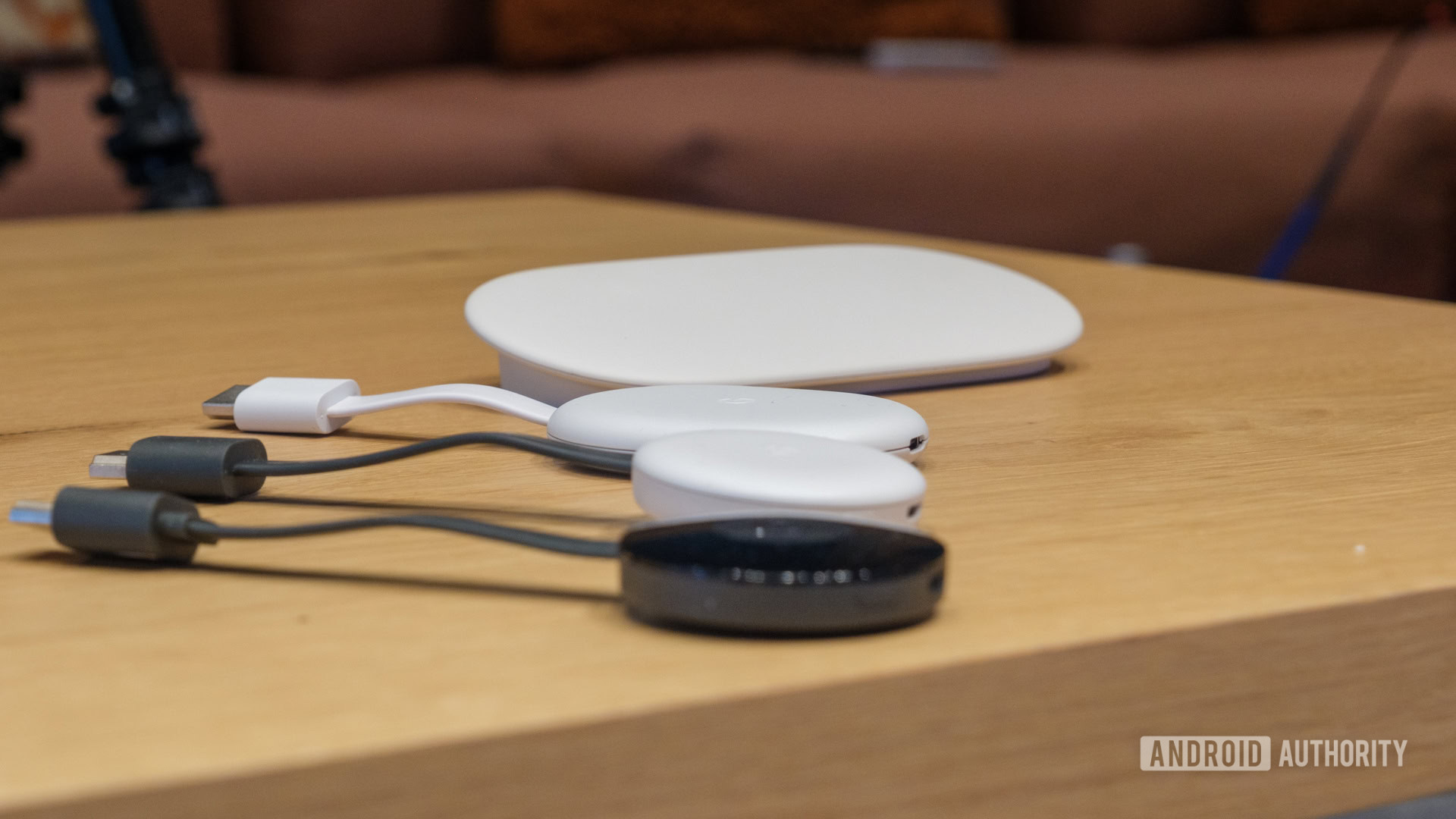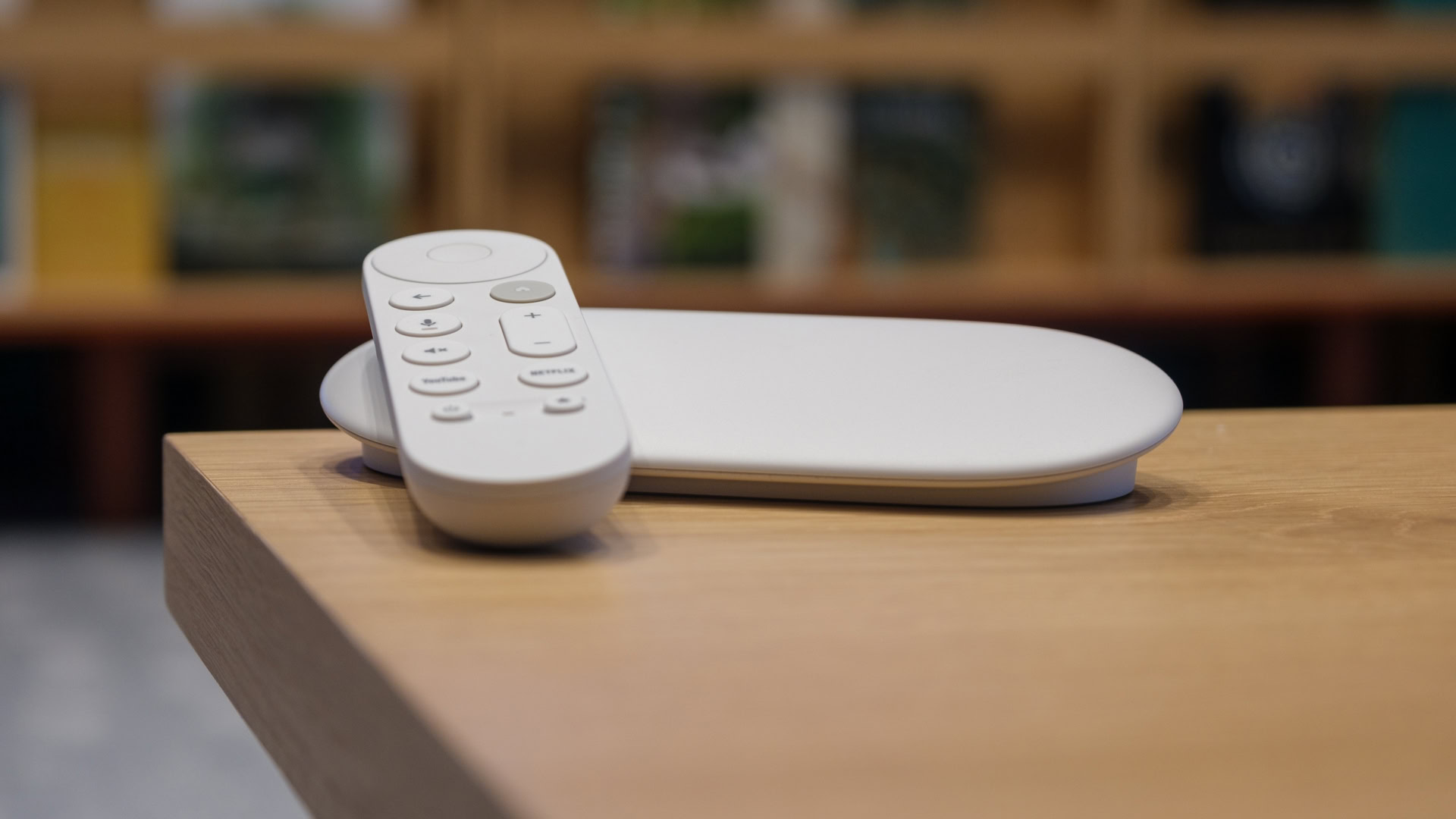Affiliate links on Android Authority may earn us a commission. Learn more.
Is killing off the Chromecast brand really a good idea?
August 7, 2024
The Google TV Streamer represents a major change in Google’s media streaming strategy, as the company has effectively discontinued the Chromecast brand after its successful eleven-year run and 100 million units sold. We won’t get into the weeds too much here since we’ve discussed the Chromecast’s legacy at length in the past, but let’s just say for many of us, the Chromecast was our first taste of the future of TV streaming. It allowed us to suddenly access our shows, movies, and even some games on our TV by simply casting the experience over to the big screen from our phones.
That’s why I was immediately taken aback when I heard Google was axing the Chromecast branding with its new streaming device. Still, the Chromecast brand had shifted away from its roots, and so part of me also felt a rebrand made a lot of sense, even if I’m not a fan of the new name at all. I’ll admit Google TV Streamer is an apt description, but it’s also very generic and… meh.
Is killing off the Chromecast branding a good idea? Initially, I felt that killing off this iconic brand was a very bad idea, but upon further reflection, I find myself a bit torn.
Is Google making a mistake by killing off the Chromecast brand?
Why killing off the Chromecast brand is a bad idea

As I mentioned briefly above, for many of us, a Chromecast was the first streaming device we ever owned. This included many Apple users as well. While the Apple TV box already existed in some form, it couldn’t compete with the impulse pricing of the first Chromecast at just $35. Google’s casting protocol was OS-agnostic and supported by many apps on both Android and iOS, making it a convenient bridge for all mobile users who wanted a cheap smart TV fix.
In the years since, many users have moved on from the Chromecast, making the switch to a smart TV or moving to another streaming platform. Part of this is because the world outgrew the basic casting experience, which is ultimately what led Google to add a full Google TV experience to its previously limited streamer. Still, the Chromecast has yet to be forgotten.
I circled back with many of my friends and family to see if they still used their older Chromecast hardware or had bought new devices since. Of the eleven people I talked to, six were Apple users. All five of the Android users I talked to had a Chromecast with Google TV or a television with Google’s OS built in, but the Apple users were a bit different. Four still used a classic Chromecast in at least a spare room on a semi-regular basis but now rocked an Apple TV in the living room, and the other two had upgraded to the Chromecast with Google TV because they loved casting but wanted a true UI experience.
I admit this is a small, anecdotal sampling, but I also spent a little time lurking around the Chromecast subreddit and found a reasonable amount of recent chatter from iPhone and Android users who are still involved in the ecosystem. Why does this matter? It’s clear that there are not only Chromecast fans still out there; there are even Apple users who still recognize the Chromecast as a viable alternative to Apple’s in-house box, some of whom are still rocking Chromecasts that don’t necessarily have the modern Google TV UI.
By ditching the Chromecast brand and bumping the price by $50, the Google TV Streamer is arguably starting all over with a new target audience. Will it work?
Will these users all move on to a newfangled ‘Google TV Streamer?’ That’s less clear, but what is obvious is that the current cast protocol still has its fans, even if it’s not perfect. Plus, Google Cast doesn’t necessarily present itself as a heavy Google-centric experience the way that Google TV does. As a result, I’d wager the Chromecast brand might be less alienating to Apple users.
Beyond just Apple users, I think for many of us, the Chromecast brand is still synonymous with Google’s streaming hardware and with the vision for cheap but functional products. Although the modern Chromecast series has a remote and full UI, Google has never strayed far from this vision, with pricing starting at $30 for the HD model and maxing at $50 for the 4K variant.
With its new box, Google is starting over from scratch in some ways here. Sure, most Google fans understand the distinction between the older Chromecast and the Chromecast with Google TV, but even I tend to refer to the newer units around my house as simply Chromecasts.
The Google TV Streamer now emphasizes Google TV alone, but that’s not the only big change here; it’s also a much more expensive proposition. The Google TV Streamer will set users back $100. Will Apple fans be willing to spend $100 on a Google-branded box when the Apple TV 4K starts at just $30 more and has more RAM and better integration with the iPhone? Not likely. Those who also just want a cheap streaming experience will also likely steer clear, opting for older Chromecasts on sale or something like the Onn 4K Pro or something with a completely different platform, like cheap streaming sticks from Roku or Amazon.
The Google TV Streamer has to prove its new vision is worth the extra cost. The improved speed, storage, and the addition of a Thread router will certainly help. There’s a long road ahead to making the Google TV brand as well known as the Chromecast, but as much as there are reasons why this change might not be perfect, it’s also possible Google felt it was necessary to position itself better for the future.
Why killing off the Chromecast brand makes sense

As much as I will miss the Chromecast brand, I also understand that the industry has changed a lot in the last ten years. Chromecast was a great starting point, but most demand a more full-fledged experience.
The Chromecast with Google TV attempted to deliver a more advanced experience, but it also added to the confusion as Google has thrown out a lot of terms over the years around media streaming, including Android TV, Chromecast, and most recently Google TV. This leads to misunderstandings about what their hardware and software can and can’t do. For example, I was trying to explain the differences between older Chromecasts and the recent Chromecast with Google TV to a friend who has never upgraded, and he had no clue that newer Chromecasts had a UI and a remote. I can see how this kind of confusion might be a recurring issue for Google.
It’s not just the confusion around casting; Google seems eager to change its vision for streaming, moving away from the cheaper streamers it’s best known for in favor of a more premium experience. I suspect a $100 Chromecast would be a harder sell than a $100 Google TV Streamer, just because of past perceptions. Breaking ties with Chromecast allows Google to better direct its efforts at creating a device that competes with Apple TV and other more expensive streamers.
It’s also completely possible that a Google TV Streamer HD could surface down the road with a lower price tag, so it doesn’t necessarily mean Google has to leave behind loyal Chromecast owners. And, of course, the existing Chromecast hardware will likely still be around for months, similar to how older Chromecast stock was still available in many stores even after the Chromecast with Google TV was announced. And as history showed us, it’ll likely be supported for a few more years.
The Chromecast legacy also comes with specific expectations around functionality and pricing. Maybe it really is time to move on.
To Google’s credit, I had similar reservations about the Google Home rebrand, and while there’s been a slowdown in new products due to changing demands, the Google Nest brand continues, even if I am less of a fan than I was during the early Google Home days. (To be fair, I was already using my Google Home less and less before the rebrand.) The same situation may just apply to the Chromecast. The rebrand won’t make everyone happy, but the Chromecast’s current direction isn’t necessarily helping the company grow its streaming platform either; it’s just treading water. By putting all of its cards into the Google TV basket, Google is pushing forward and hoping that it can reshape its image as more than just a basic, cheap fix to streaming.
I still haven’t answered the question, I know. Honestly, while nostalgia makes it hard for me to move on, I have to admit this change might be for the best. There are reasons to move on, but only time will tell if the Google TV Streamer will ever be able to make the same kind of mark the Chromecast has over the last decade.
Regardless, I know I’ll likely end up buying one, and I’ll still call it Chromecast… that much you can bet on.

Smart home features
Great remote
Flagship product

Has a remote control
1080p Google TV experience

Google Assistant is wildly handy
Combines nearly every streaming service into one